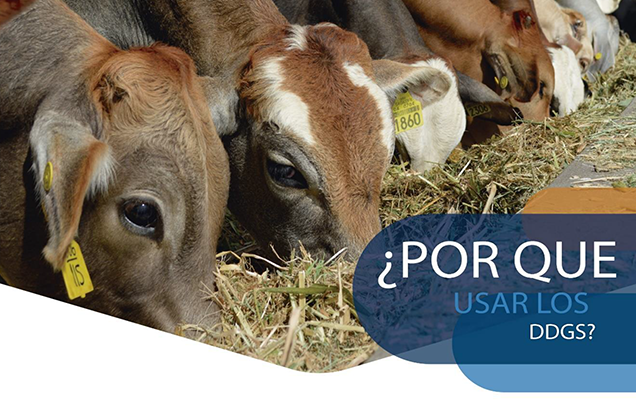
In a market defined by face-to-face interactions, the U.S. Grains Council (USGC) shifted strategy to sharing information and resources via WhatsApp, text message and webinars to keep the cattle industry in southeast Mexico engaged as supplies and prices of U.S. distiller’s dried grains with solubles (DDGS) fluctuated in spring 2020.
That strategy has paid off as sales into the region are now showing significant signs of recovery. Purchases of the feed ingredient fell essentially flat in April and May due to the U.S. production shortfall related to the outbreak of COVID-19 and an increase in the exchange rate between the U.S. dollar and the Mexican peso. However, DDGS exports to southeast Mexico regained strength in June 2020 at 3,150 metric tons, comparable to sales in January and March. Overall, the region has imported 9,720 tons since the first of the year. While these sales are small compared to the northern Mexican market, they continue to represent an area of growth and expansion for U.S. exports.
“The dramatic rise in prices caused confusion with distributors and end-users, in turn causing demand to drop off,” said Javier Chavez, USGC marketing specialist in Mexico. “As time passed, and U.S. ethanol production came back online, prices recuperated, and imports resumed.
“Southeastern cattlemen like supplementing with DDGS, as long as it remains cost effective. The market we have built is one we knew would come back when prices settled back down, so we worked to communicate with them throughout these challenging months. Even at the height of the pandemic, cattle – just as people – need to keep being fed.”
The Council’s strategy in southeast Mexico has traditionally been very hands-on, relying on field trials with key industry stakeholders and direct follow-ups that promote a snowball of demand build. When travel restrictions were imposed, the Council and its consultants immediately started to brainstorm alternative methods to keep in contact with end-users and distributors.
One challenge to adjusting programming in this region is that many key end-users do not have computers. As a result, the Council assisted these buyers in downloading and using Zoom on their cellphones and shifting to cell phone friendly collaboration tools like WhatsApp.
“For our end-users, Zoom was a novelty, but they are always hungry for information,” Chavez said. “Our webinars and other communication methods attracted attention and kept end-users and distributors aware of the latest in DDGS prices and availability.”
The Council also moved programming targeted at distributors into a webinar format, helping explain the variables affecting DDGS prices. This work was reinforced by information capsules – educational graphics containing practical DDGS recommendations in an easy-to-read format – distributed directly to contacts’ cell phones via WhatsApp.
“Capsules have turned out to be very important,” Chavez said. “We learned that this information was being forwarded to friends and neighbors, and we cross-posted on our social media channels, furthering the reach of these recommendations to an even larger audience.”
Another key to this success was the distribution network the Council has helped build in the region. This network includes importers, grain buyers, feed retailers and other key influencers in the cattle industry.
“Just as we keep building demand, our consultants have constantly been developing networks of DDGS suppliers and distributors,” Chavez said. “This paid off when feed retailers had to procure DDGS from alternative suppliers.
“Six years ago, there were no DDGS suppliers. Now we have helped develop a supply chain that was able to respond and continue providing the feed ingredient to end-users in the region.”
The Council will resume in-person activities in southeast Mexico when it is possible and safe to do so, including offering new feeding trials and seeking out more potential pockets for expansion. Until then, USGC staff in Mexico will continue engaging end-users through these alternative, and creative, methods to support sales into the region.
“The Council has built a reputation as a source of information, resources and education,” Chavez said. “Our work to date in southeast Mexico is only the tip of the iceberg with plenty of room left to grow for U.S. DDGS.”
Learn more about the Council’s work to promote DDGS in Mexico.
About The U.S. Grains Council
The U.S. Grains Council develops export markets for U.S. barley, corn, sorghum and related products including distiller’s dried grains with solubles (DDGS) and ethanol. With full-time presence in 28 locations, the Council operates programs in more than 50 countries and the European Union. The Council believes exports are vital to global economic development and to U.S. agriculture’s profitability. Detailed information about the Council and its programs is online at www.grains.org.

